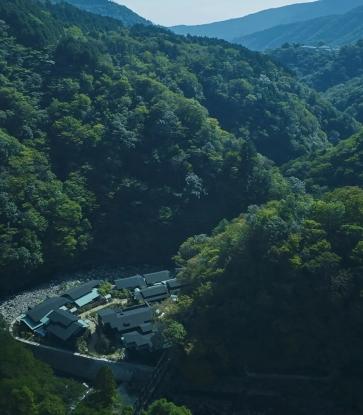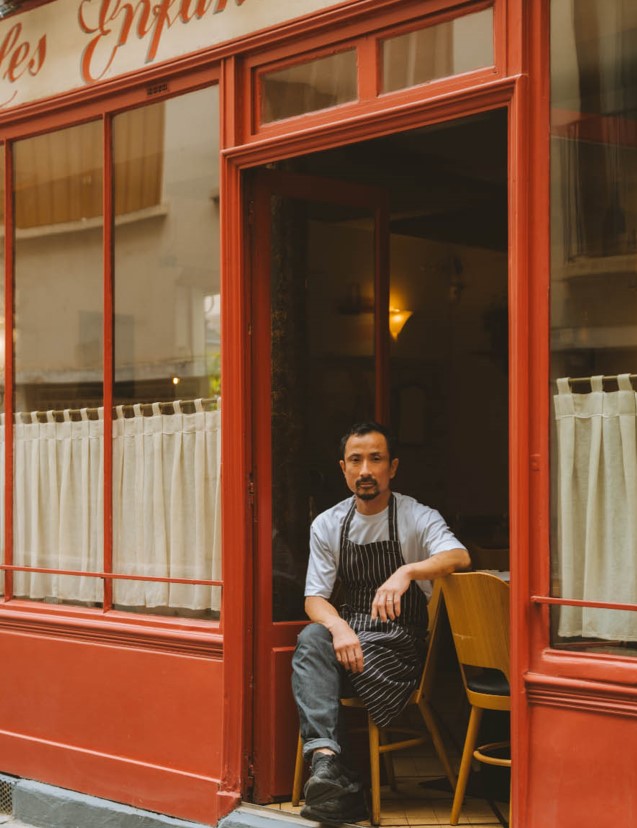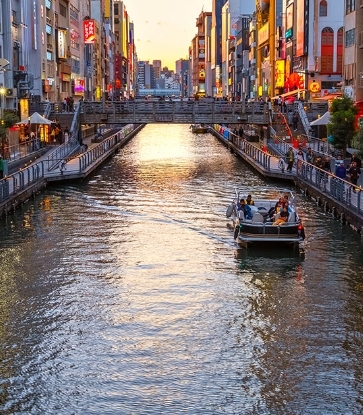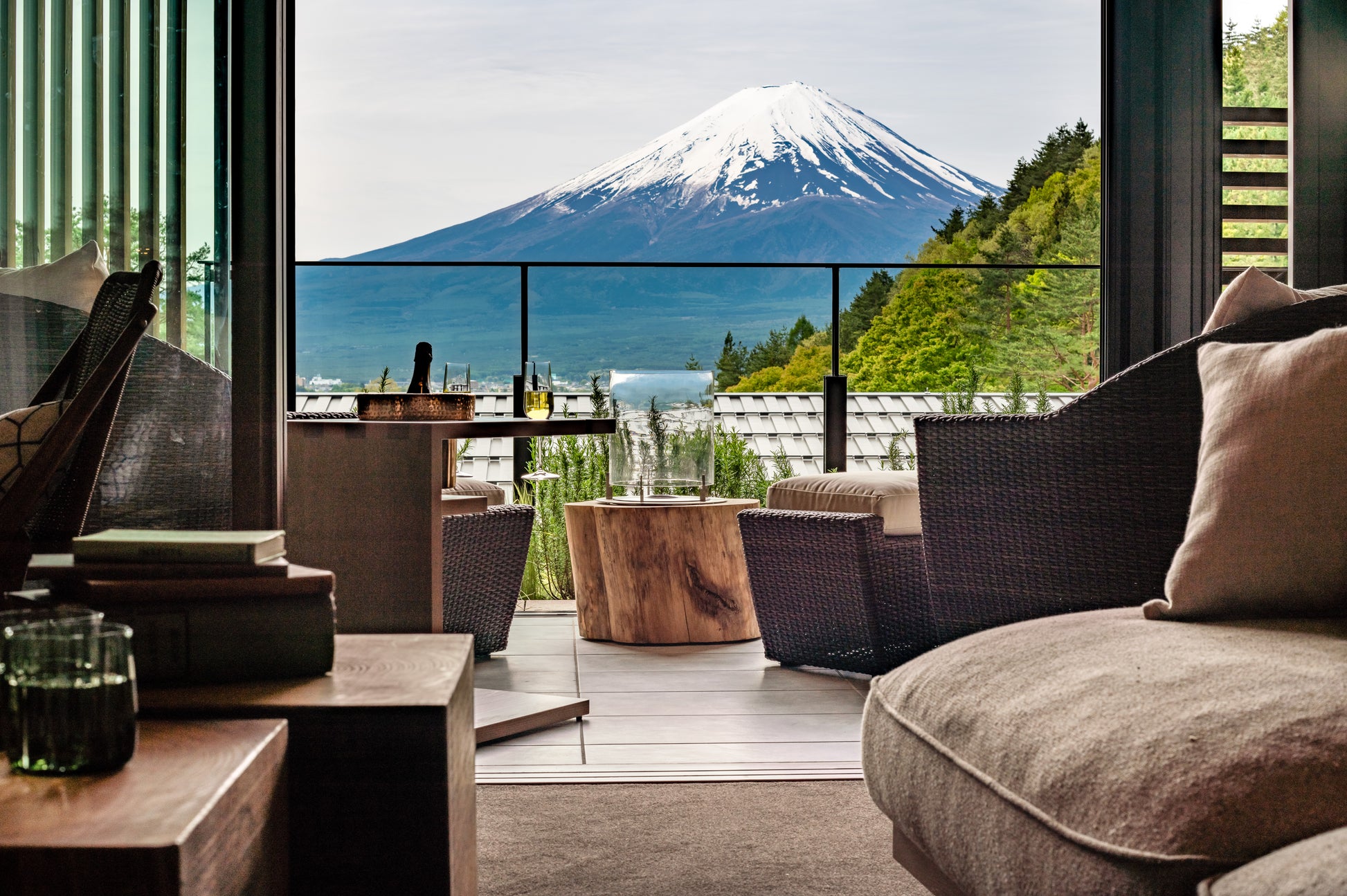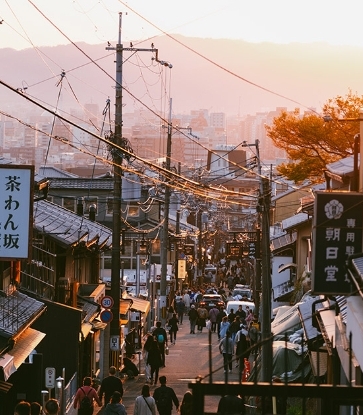The place of Japanese green teas in Alexandre Mazzia's world
Alexandre Mazzia is a hard worker, cheerful and attentive to his team, like a captain steadily steering his ship. Japanese teas seem to galvanise the man, who, every day, composes and commits to memory a veritable library of food flavours based on ingredients from near and far.
Every morning, chef Alexandre Mazzia repeats to himself : "There are no limits to knowledge". Insatiably curious, he was introduced to Japanese green teas while living in Osaka and Kyoto, where he spent eight months cooking for a French-English couple who were well versed in Japanese customs. He admits that genmaicha is his favourite, as he is a big fan of roasted and toasted notes. On his quest to find the best combinations, this fan of contrasts and alliances between vegetable, herbaceous, sweet, acid, spicy, smoked or burnt notes, is constantly experimenting in his compact kitchen, which opens onto the dining space of a restaurant with no more than 22 or 24 covers.
Since he opened his own restaurant in Marseille, he has been on a mission to compose a truly organic and creative set menu like no other. More than a mere menu, this is a culinary journey that varies depending on his mood and draws on techniques such as roasting, smoking and induction. All that diners have to do is let themselves be guided through three, five or seven "sequences", each accompanied by several inventive "satellite" dishes.
Alexandre Mazzia knows more than most about the importance of the container, that integral part of the Japanese aesthetic: "The receptacle is essential because it highlights my creations." Head sommelier Kevin Bardau looks after the bowls, which are stored in large drawers ; they are part of a collection of some 600 pieces accumulated since the restaurant opened. Certain bowls are reserved for the three Japanese green teas served throughout the meal – and of course no two are the same.
The type of tea is chosen in advance according to the sequence prepared by the chef. "I think it's important to have a common thread, a dialogue between all the teas," says Alexandre Mazzia, well aware that the customer is able to detect the subtle notes of the dish and the tea in harmony with each other. "Generally, the customer will taste the tea before starting on the food," he adds. In this way, the tea's aromas coat the palate, all the better to receive each element of the dish and each pairing with fish, jus, vegetables and spices. "By serving tea, control is retained over the culinary experience, and diners feel they are left with a clear, palpable memory… You aren't in a haze of alcohol that means because you drank a bit too much wine you think it was great but you missed quite a few things. The client is more ready to listen. The depth of our work is then more appreciated," reasons Alexandre Mazzia.

Organic teas from Luciole
The Luciole boutique in Marseille is known for being very rigorous in its choice of utensils and manufactured products. The green teas they select come from Shizuoka (Honshū island). As Luciole's managers explain, they "work with a small-scale grower, and all our Japanese green teas are guaranteed pesticide-free. Weeding is carried out by grazing black-headed goats." Each tea, chosen in collaboration with Alexandre Mazzia's team, is of organic origin – "a guarantee of incomparable freshness" – and vacuum-packed. As soon as the tea leaves are harvested, they are immediately steam-dried to halt the oxidation process. "This crucial step allows us to preserve all the leaf's fresh, spring aromas."
Japanese green teas at AM
The first tea to be served is a Saemidori sencha. Harvested in mid-April in Uji and renowned for its lovely blue-green colour liquid, it is steeped at a temperature of 70°C for 90 seconds. "We chose a glass teapot for each tea," explains Kevin Bardau, "to reveal the colour and flavours, but also to fit our identity – a nod to transparency and aesthetics." This tea with a vegetable and subtle iodine taste develops a definite umami mouthfeel, lending fluidity and refreshing notes that go well with the predominantly fish-based "aperitif sequence" : trout eggs and wild salmon marinated in sake and smoked milk, in particular.
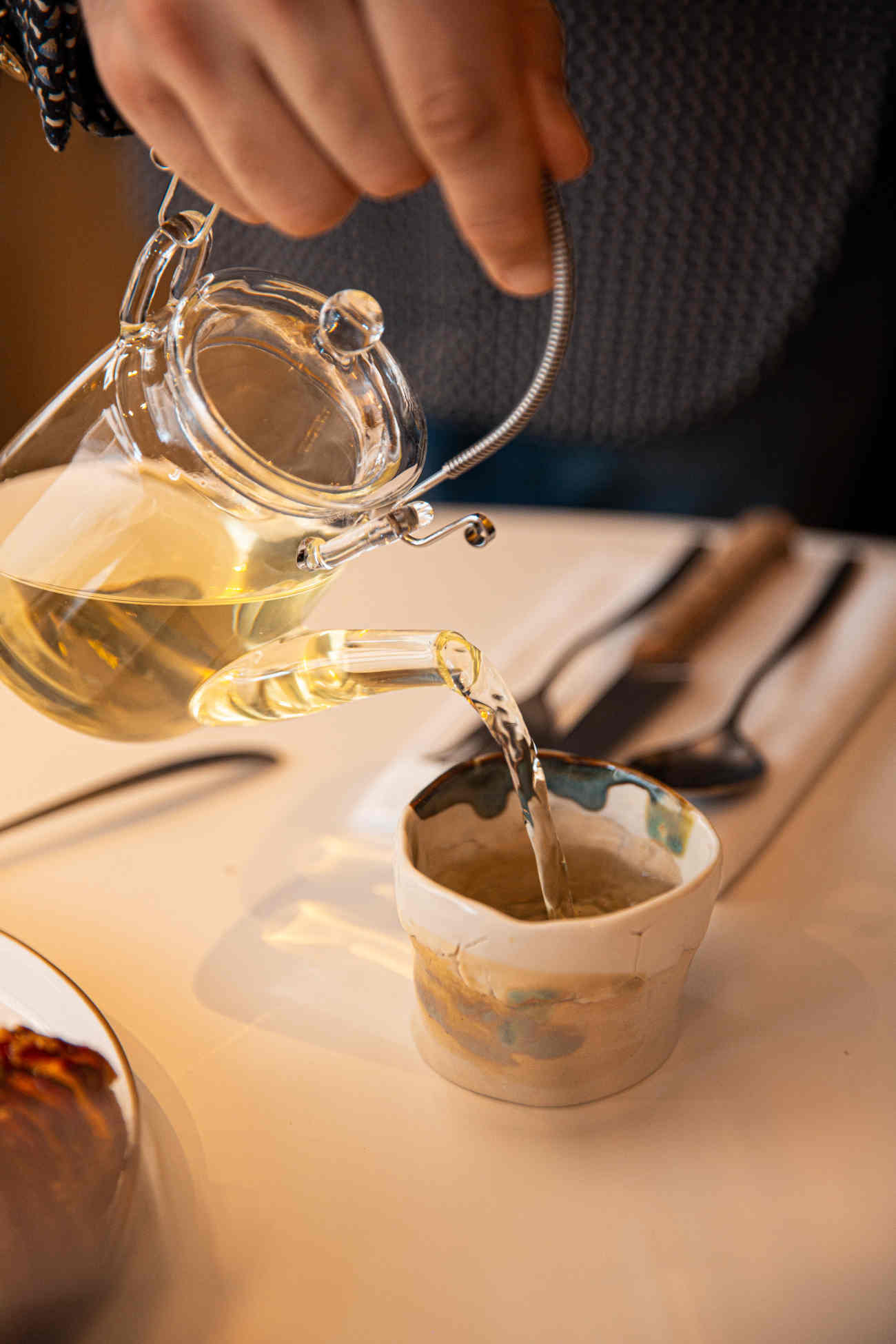
The second Japanese green tea to be served is a bancha hōjicha with well-roasted notes that vitalise the body. Good reason for the chef to pair it with his composition of a trio of mussels, mackerel and herring, with coconut, tarragon mojito condiment and green jus, a subtly herbaceous dish (slightly spicy wild arugula); spider crab meat, orange blossom semolina, shell juice, horseradish. "A spicy dish, but it is also important to have something light that can be quite herbaceous – so that it contrasts with the tea, which goes well with the fish and seafood components," comments Alexandre Mazzia.
Finally, what about matcha ? Despite having a patisserie qualification himself, Alexandre Mazzia has recruited a talented pastry chef to his team, in the form of 28-year-old Alessandro Moretto (born near Padua, in the north of Italy). Alexandre Mazzia has chosen to fete Japanese matcha, a green tea powder that he likes to deploy like a spice. He uses it in his signature dessert, called simply : Dulce de leche and Matcha Green Tea Ice Cream. "We use several matcha teas and sift the powder to get the desired finesse in relation to the dulce de leche," he says. "We then ask ourselves questions : how will the tea react to the cold, will it become too sticky, and will we end up with too sandy a texture? The tea has to remain soft and pair well with the dulce de leche so that we get this almost caramel-like texture that is a little stretchy".

Alexandre Mazzia tried several milks – full fat and skimmed cow's milk, soya milk and rice milk – in pursuit of the perfect dulce de leche. Verdict : "It is important to see the reaction of the matcha in these different versions, also because the colour varies according to the temperature." Ultimately, the chef opted for full fat milk mixed with sweetened condensed milk. The end result is on point ; the dish as a whole is visually appealing with its green spheres nestling in small brass spoons that call to mind stems, filaments, tendrils… The scoops must be served at the right temperature, i.e. room temperature, so that once they are in the mouth, the matcha and the dulce de leche coordinate on the palate. You can then enjoy this dessert "like a sweet," as the chef says with a smile… A sweet that melts beautifully in your mouth. Of course, the Marseilles chef's decision to work with Japanese matcha as a spice does not in any way overshadow the appeal of matcha as a drink.
AM, a restaurant acclaimed by critics and endorsed by gourmets, is without a doubt the ideal place for a gentle introduction to Japanese green teas, under the guidance of an expert and passionate chef, Alexandre Mazzia.
More information : https://greentea-jfoodo.jetro.go.jp?utm_source=michelin&utm_medium=collab&utm_campaign=all&utm_content=article
Hero Image : Alexandre Mazzia / Photo : Florian Domergue







